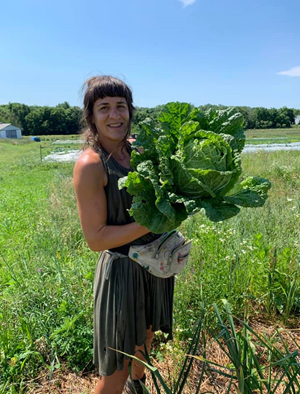Conserve and Protect the Monarchs

South Central Region – antelope horn milkweed, green antelope horn milkweed, zizotes milkweed
Southeast Region – aquatic milkweed, white milkweed, butterfly milkweed
West Region – showy milkweed, antelope horn milkweed
By Bailey Miller
Few people know that monarch butterflies are suffering from a lack of resources to help sustain their migration. Luckily for these winged creatures, a program has been set up to aid the migration of butterflies here in Chambersburg, Pennsylvania. Jessica Larkin is the program manager of the Monarch Waystation Program at the Fulton Farm, which was started in August 2020. Nancy Scouller, a work-study student at the Fulton farm and current senior at Wilson College, is the co-creator of this project. Other Wilson community members, such as Christine Mayer, a professor at Wilson, helped bring this program to life. Larkin, and other members of this program, have taken it upon themselves to address their concerns regarding the sustainability of monarch habitats. This project has provided resources such as flowers, milkweed, and nectar sources to attract these butterflies and give them a safe habitat during their migration process.
Learning about the depletion of the monarch butterfly population is what interested both Larkin and Scouller in this cause. Larkin took interest after taking an environmental literature class focused on education, conservation, and citizen science. Both Larkin and her professor, who introduced her to this issue, felt determined to create a Monarch Waystation, once they learned the severity of this problem. They knew that this would be an efficient way for them to make a difference.
The major causes for milkweed and nectar source decline include climate change and agricultural practices that are damaging these habitats. Larkin’s work around the farm has helped these habitats stay intact by assuring that weeds and herbicides are not damaging these crops that attract the butterflies. Millions of acres of these monarch habitats are being depleted, which Larkin and Scouller agree is saddening and heart-breaking. There are many factors that play a part in the depletion of these habitats, but this program has proposed that there is still time for society to make a difference for these monarchs.
There are many ways communities can be involved and do their part in the conservation of monarch butterflies. There are tools to create your own Monarch Waystation in your own backyard, which is a simpler process than one may think. The inclusion of plants and milkweeds, specific to your region, is all that is needed to create one’s own backyard Waystation. There are many guides and tips provided by the Monarch Waystation website that can help with the process of making your own monarch habitat. Not only is this an easy way for citizens to get involved, but Larkin also explains the beauty of it all and how “that whole entire process is really a miracle.”
The depletion of these monarch butterflies is truly a devastation for such a beautiful species. Scouller explains the importance of becoming educated on this information. She suggests, “Let’s do something about it!” To truly conserve and protect these monarch butterflies, spreading awareness of this topic is crucial.
Larkin states, “It’s a really small, tiny act that makes a huge change.”
For more guidelines and information on the Monarch Waystation Program visit: Monarch Watch Monarch Waystation Program

